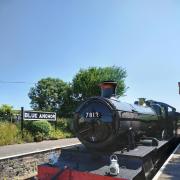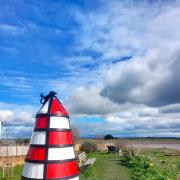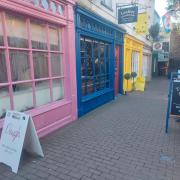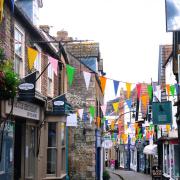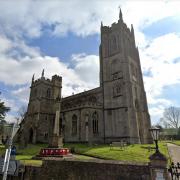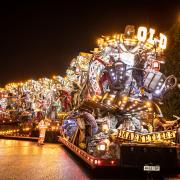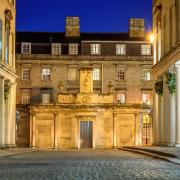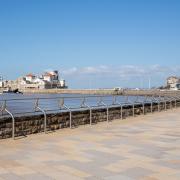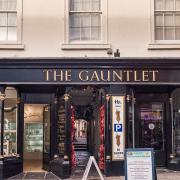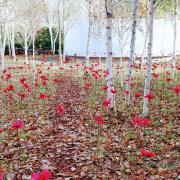With a magnificent Cathedral at its heart and a wealth of history running through its veins, it's no wonder that people are proud to live and work in England's smallest city, as they tell Sarah Ford
If you have any stories you would like to share with our readers, please leave comments below.
With a magnificent Cathedral at its heart and a wealth of history running through its veins, it’s no wonder that people are proud to live and work in England’s smallest city, as they tell Sarah Ford Sarah Duthie
Sarah Duthie is General Manager at the historic Bishop’s Palace and Gardens, which attract 40,000 visitors each year.
Can you give me a brief history of the Bishop’s Palace?
The Bishops of Bath and Wells have lived at the Palace since 1206, when Bishop Jocelin was granted a licence to build a residence next to the Cathedral. The Great Hall was added in the 14th century and then partly demolished in the 19th century to create the picturesque garden you see today.
What can visitors find there?
The medieval Palace and its splendid gardens are steeped in history, and are a site of international significance. The grounds contain the prehistoric springs that lend their name to the city and the Palace is also famous for its swans, which ring a bell for food.
Why have you launched an appeal?
The aim of the major development project is to extend access to the Palace and its beautiful grounds, making them more open and welcoming to a wide variety of local organisations and interest groups, thus providing a real service to the local community. (www.bishopspalace.org.uk)
Very Revd John Clarke
The Very Revd John Clarke is Dean of Wells Cathedral, which has recently undergone one of the biggest building projects at any English medieval cathedral since the Reformation.
How important is the Cathedral to the local community?
The Cathedral plays a significant role in the economy of Wells and Mendip, it is the symbolic focus of the Diocese of Bath and Wells and for large-scale services and concerts in Somerset. It welcomes more than 300,000 visitors each year, 20% of whom come from overseas.
What are the main features completed in the recent Cathedral Development Project?
It has enabled the reopening of the medieval cloisters and Pilgrims’ Porch, and the opening of the medieval Undercroft to the public for the first time. It has improved disabled access and toilet facilities. The new entry cloister with shop, restaurant and garden has enhanced the first impressions gained by visitors.
Are there any special events taking place this year?
On 21 March we’ll see the pomp and ceremony of the legal service when the new High Sheriff of Somerset is sworn in. Good Friday and Easter Day are central to the Christian year and on 18 July St Margaret’s Hospice celebrate their 30th anniversary with a service in the Cathedral.
Jim Hanwell
Jim Hanwell, of Wells & Mendip Museum, is a Vice-President of Wells Natural History & Archaeological Society.
Tell me about your long association with the museum.
It goes back to the 1950s when I was inspired by the founding curator, Herbert Balch, to explore Mendip caves and start my professional career. I became Chairman of the Museum’s Trustees and Managers for the Centenary and Millennium Developments during the 1990s.
What sorts of things are amongst the collections?
This area has a huge prehistoric period and large association with lead mining. For something completely different, there is a renowned samplers collection. Visitors will find the Witch of Wookey Hole in the museum, but we tell the true story!
What events can we look forward to this year?
A new exhibition touring Somerset until 15 May features iconic finds from the stored collections of important museums in the South West. A Bronze Age exhibition will include artefacts from the Beacon
Hill excavation. An art exhibition, ‘Untamed Somerset’, runs until 14 March. (www.wellsmuseum.org.uk; 01749 673477)
Natasha Mingo-West
Located in the shadow of the Cathedral and sympathetically restored, the award-winning Swan Hotel is steeped in over 500 years of history. Natasha Mingo-West is Sales and Marketing Manager.
What makes Wells special?
The history, the architecture and the people. Wells Cathedral is stunning and, owing to the close proximity of the Swan Hotel, it is a view I get to enjoy every working day. I also have great childhood memories of Wells as my grandmother lived here.
Why is Wells a good place to shop?
The superb range of independent stores and the popular bi-weekly market ensure that Wells really stands out from other city centre
high streets. When you need to take the weight off your feet there are plenty of bars, restaurants and eateries to choose from.
What events can we look forward to in 2010?
There will be a funfair on the market place on May Bank Holiday and the popular Wells Moat Boat Race will
be held on August Bank Holiday. Alongside the host of concerts, festivals and fairs that take place in and around Wells, we are planning to host a number of events at the hotel.
Janet Wood
Janet Wood, of Mere Fish Farm, is the Manager for the Farmers’ Market, which is held each Wednesday in Wells Market Place.
What can we find at the market?
The Farmers’ Market offers fresh seasonal local produce, direct from the farm or producer. The stall-holders come from within a 40-mile radius and the market runs from 9am until 2.30pm.
How important is the event to local producers?
For many producers it’s their only means of selling to the public. The fact that it is a weekly event means that we get regular trade; we are on people’s shopping lists and I feel the market is now part of the local community.
Where do your customers come from?
We have a very loyal following. The majority of our customers come from Wells and surrounding villages but people also travel in from Bath and Bristol and coaches bring customers in from Weston-super-Mare and Wales!
Cllr Christina Borastaro
Mayor of Wells, Councillor Christina Borastero says the place has a strong sense of community, which is borne out in its various organisations and events.
What have been your most memorable moments as Mayor of Wells so far?
I think that there are two parts of my term which are really memorable. First, the many events I have attended with local school children – it’s great to see so much energy, playfulness and creativity. Second has to be the many associations that I have had with our Armed Forces.
How would you describe the local community?
Wells is a traditional city set in rural Somerset. I think that the whole city appreciates the environment which acts as the backdrop for the community to survive. This means that there is a keen interest in ensuring that development, of any kind, moves the city on, but doesn’t destroy the character.
Are there any Council projects in the pipeline?
The Council is committed to keeping its tax down to the lowest point, because of the economic situation our residents now face. Despite popular belief, we are a parish council and have the powers that go with it. However, I think the Council operates on the ‘front line’, listening and influencing issues well above its remit



